A Tenor Guitar for Hank Sapoznik
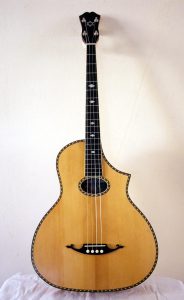 My friend Hank Sapoznik presented me with the challenge of making a tenor guitar a little while back. I was not very familiar with the instrument and the role that it played in the music that Hank played. Hank is a fantastic 5 string banjo player and plays both claw hammer and classic three finger style for old time, hillbilly music, as well as a variety of rags. He primarily uses the tenor when he’s playing Klezmer. I wasn’t really familiar with Klezmer, so I had to do some listening and acquaint my ears with the role of the tenor in the group. I also stopped down to Spruce Tree Music to get Wil Bremmer’s opinion on tenors and see if he had any guidance to offer.
My friend Hank Sapoznik presented me with the challenge of making a tenor guitar a little while back. I was not very familiar with the instrument and the role that it played in the music that Hank played. Hank is a fantastic 5 string banjo player and plays both claw hammer and classic three finger style for old time, hillbilly music, as well as a variety of rags. He primarily uses the tenor when he’s playing Klezmer. I wasn’t really familiar with Klezmer, so I had to do some listening and acquaint my ears with the role of the tenor in the group. I also stopped down to Spruce Tree Music to get Wil Bremmer’s opinion on tenors and see if he had any guidance to offer.
I learned from listening to Hank’s group, the Youngers of Zion, that he primarily uses his tenor guitar as a rhythm instrument, to compliment the bass or tuba as the fiddle does the majority of the solo work. He occasionally inserts a fill or a run, but primarily plays a very hard driving rhythm.
Wil’s take on the tenor guitar was that it evolved from the tenor banjo as a somewhat softer alternative. The tenor banjo had evolved from the banjo mandolin, as a less shrill alternative, and the banjo mandolin evolved from the mandolin during the banjo craze. He said that there were no rules that applied to the scale or body size of the tenor guitar and that most companies just attached a shorter tenor neck to one of the many body styles they offered. I had been thinking about making a smaller instrument, but Wil told me to consider making a bigger one in order to get more sound.
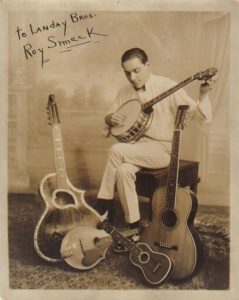 The main influence for the guitar came from an instrument called the Octachorda which was played by two early wizards of the strings, Roy Smeck and Sam Moore. Smeck had told an interviewer at some point that he and Sam Moore were the only two people to have octachordas made for them and that his was stolen from a hotel room sometime in the 20’s. Smeck’s octachorda was a very fancy instrument, with lots of inlays, pearl trim, heart shaped soundhole, elaborate carved bridge and a scroll type headstock with some type of head carved in it (possibly a lion?). Sam Moore’s instrument was more plain, with a standard slot head, simple white binding and a square pyramid bridge. The feature that really sticks out on both instruments is the Florentine cutaway, which just sort of dips off at the 12 and curves elagantly down to the center of the upper bout, rather than curving back up as is the case on the majority of modern cutaways.
The main influence for the guitar came from an instrument called the Octachorda which was played by two early wizards of the strings, Roy Smeck and Sam Moore. Smeck had told an interviewer at some point that he and Sam Moore were the only two people to have octachordas made for them and that his was stolen from a hotel room sometime in the 20’s. Smeck’s octachorda was a very fancy instrument, with lots of inlays, pearl trim, heart shaped soundhole, elaborate carved bridge and a scroll type headstock with some type of head carved in it (possibly a lion?). Sam Moore’s instrument was more plain, with a standard slot head, simple white binding and a square pyramid bridge. The feature that really sticks out on both instruments is the Florentine cutaway, which just sort of dips off at the 12 and curves elagantly down to the center of the upper bout, rather than curving back up as is the case on the majority of modern cutaways.
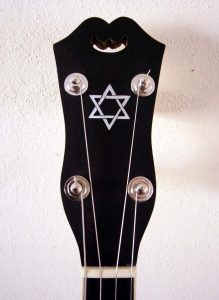 Rather than trying to do a somewhat straight copy of the octachorda, I decided to use the shape, hoping the wide, short lower bout would fill out the tone of the smaller body, and draw from bowl back mandolins for the other defining features. Instead of the heart shaped soundhole, I went with an oval. I had made some mosaic purfling for a Stoneman copy and decided that the pattern would give the body a nice look. I’ve been favoring European spruce and maple back and sides lately, so I decided that it would be a good combination for the tenor.
Rather than trying to do a somewhat straight copy of the octachorda, I decided to use the shape, hoping the wide, short lower bout would fill out the tone of the smaller body, and draw from bowl back mandolins for the other defining features. Instead of the heart shaped soundhole, I went with an oval. I had made some mosaic purfling for a Stoneman copy and decided that the pattern would give the body a nice look. I’ve been favoring European spruce and maple back and sides lately, so I decided that it would be a good combination for the tenor.
The shape of the headstock and the scroll cutout came out of the Neapolitan mandolin playbook. Hank and I discussed inlays and he decided on an intertwined Star of David. It was good exercise for my developing inlay and engraving chops. It really stands out on the finished product.
The bridge was my design, a hybrid of a couple different mustache bridges. It added a nice touch to the overall look and seemed to compliment all of the other curves and features of the instrument.
It’s always great fun to get an order for an instrument and not have any rules to follow. This one was the product of several different instruments and a lot of sleep deprivation, largely due to a teething one year old. It made it’s debut at Hank’s Klez Camp Roadshow this past weekend and it was fantastic to see and hear it in a great room with a bunch of world class musicians. That certainly doesn’t happen every time.
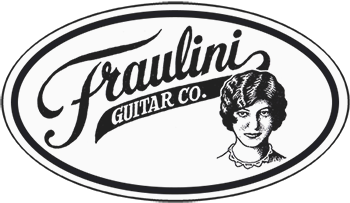
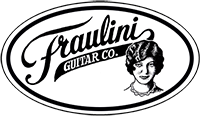
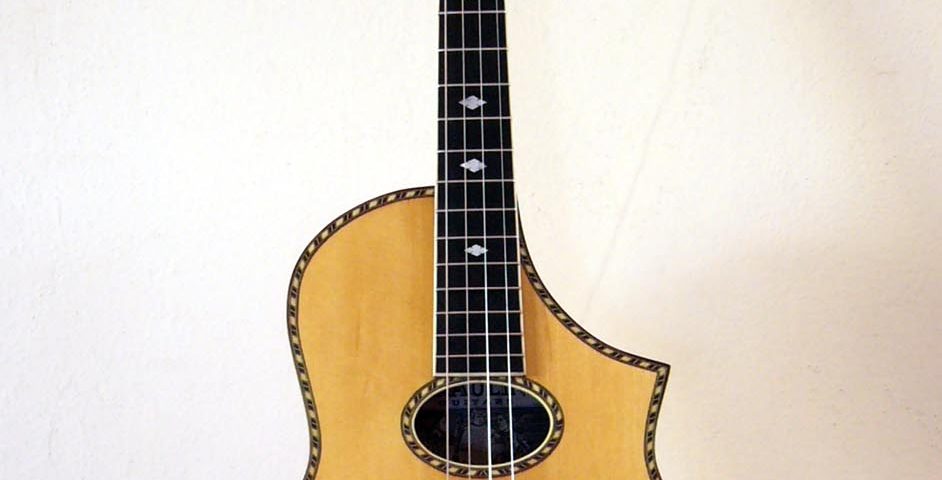
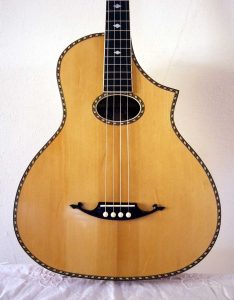

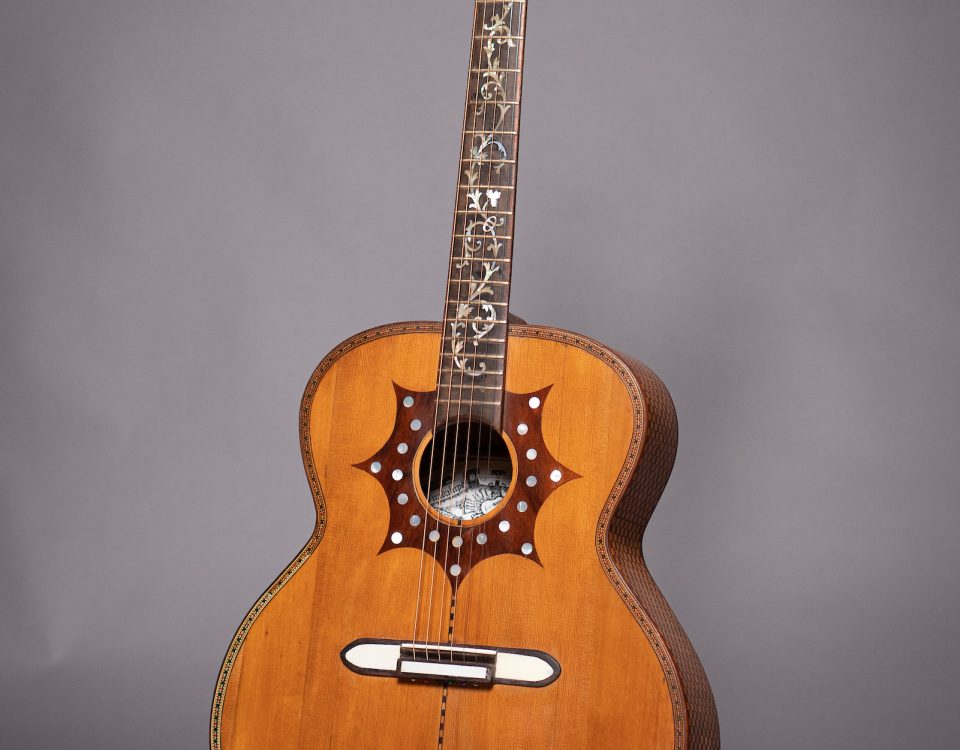
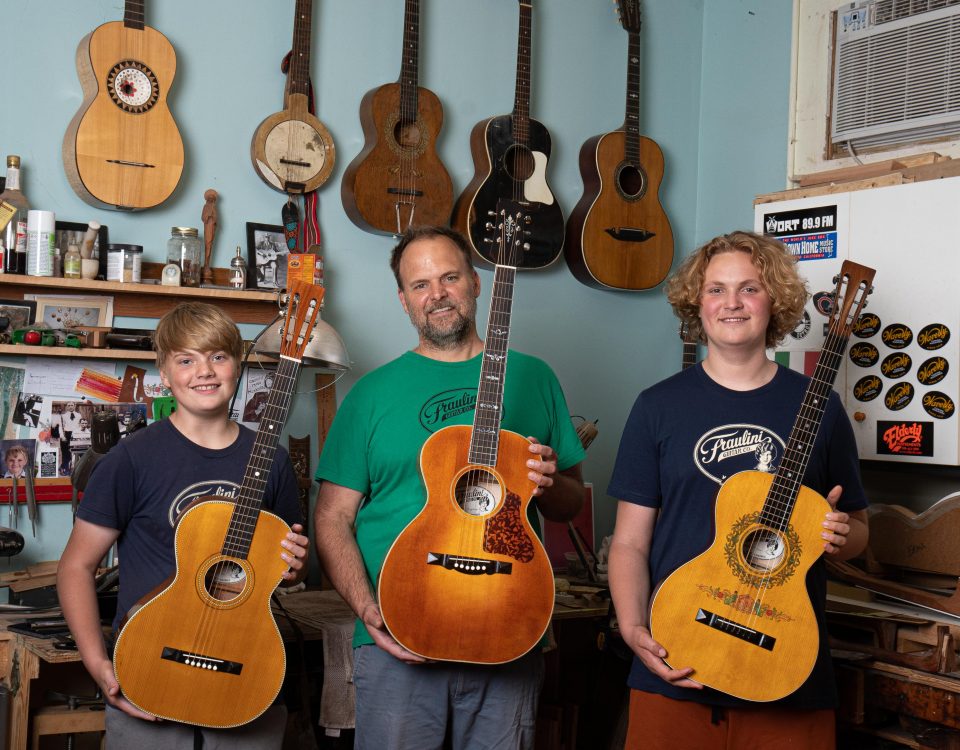
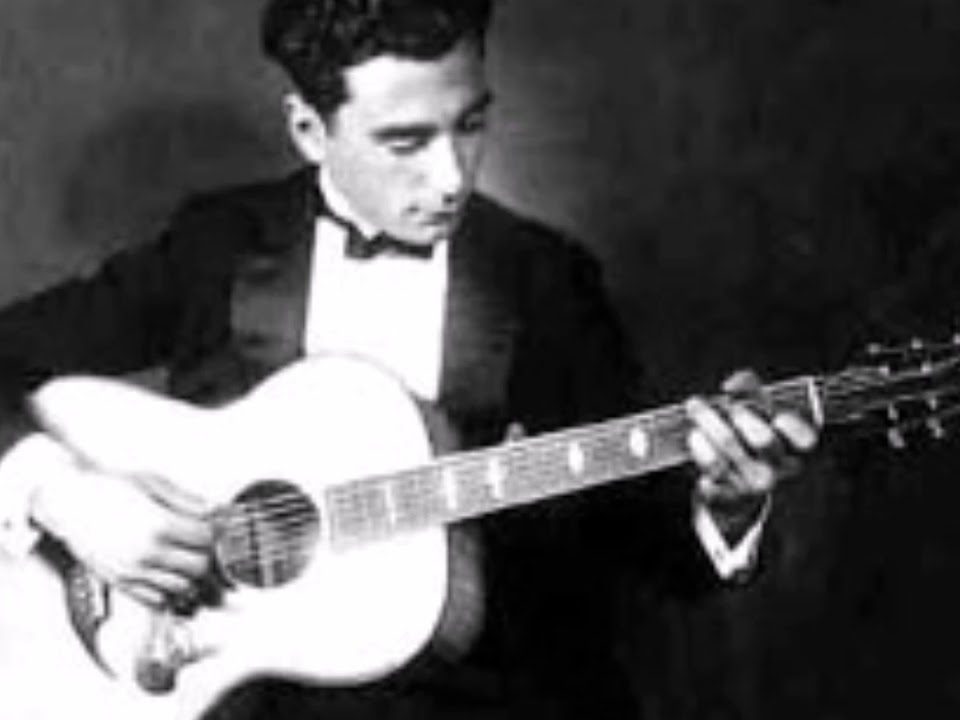


1 Comment
Nice guitar, a lot of the stylistic elements of the octachordo (which means 8 chords in Greek) come from the laouto, such as the lion headstock, 11 fret neck, and the bridge design since it was made by Stathopoulo who also made laouta.